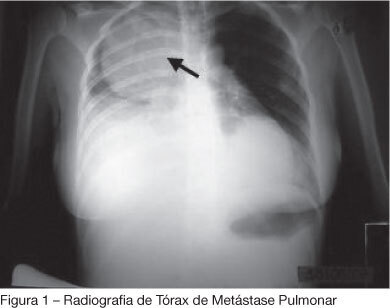Abstract
Rev Bras Ter Intensiva. 2008;20(2):205-209
DOI 10.1590/S0103-507X2008000200015
BACKGROUND AND OBJECTIVES: Palliative care is based on prevention and relief of suffering, identifying, assessing and treating pain and other physical, psychological, social and spiritual problems. Sudden dyspnea is frequently observed in terminal oncologic patients. In these cases, noninvasive ventilation can be an adequate option to control dyspnea promoting comfort and allowing patient interaction with their relatives. The aim of this article was to present the benefits of noninvasive ventilation in the palliative care setting. CASE REPORT: The case of a 29 year old patient, admitted in intensive care unit (ICU), after cesarean section delivery, for clinical treatment of acute respiratory failure is reported. Chest X-ray showed pulmonary mass in the right lung. After clinical and image investigation, metastatic thoracic sarcoma was diagnosed and palliative cares were introduced. The ICU interdisciplinary team chose to use noninvasive ventilation (modality CPAP + PSV) to relieve dyspnea and discomfort, as well as to allow interaction with her baby and family. CONCLUSIONS: Palliative care with noninvasive ventilation contributed to increase comfort of the patient by controlling dyspnea.

Abstract
Rev Bras Ter Intensiva. 2008;20(2):184-189
DOI 10.1590/S0103-507X2008000200012
BACKGROUND AND OBJECTIVES: Chronic obstructive pulmonary disease (COPD) is defined as a syndrome characterized by usually progressive chronic airflow limitation which is associated to a bronchial hyperresponsiveness and is partially reversible. Noninvasive mechanical ventilation is an alternative treatment for patients with COPD exacerbations. The objective of the literature reviews was to verify noninvasive mechanical ventilation benefits and complications in acute exacerbations of chronic obstructive pulmonary disease in patients. CONTENTS: This national and international's scientific literature review was developed according to criteria established for documentary research in the MedLine, LILACS, SciElo, PubMed and Cochrane, databases using the key words: chronic obstructive pulmonary disease and noninvasive mechanical ventilation. Inclusion criteria were articles published from 1995 to 2007; in English, Spanish and Portuguese; studies in the human model and with no gender restriction. CONCLUSIONS: Noninvasive mechanical ventilation can reduce partial pressure of carbon dioxide, improve gas exchange, alleviate symptoms as dyspnea caused by fatigue of the respiratory muscles, reduce duration of hospitalization, decrease need for invasive mechanical ventilation, reduce number of complications and also lessen hospital mortality. The main complications found were: facial skin erythema, claustrophobia, nasal congestion, face pain, eye irritation, aspiration pneumonia, hypotension, pneumothorax, aerophagia, hypercapnia, gastric insufflation, vomit, bronchoaspiration, morning headaches, face injuries, air embolism and, last but not least, discomfort of the patient. Noninvasive mechanical ventilation can be more effective in patients with moderate-severe exacerbations of COPD and these complications can be minimized by an adequate interface also by the contribution of the physiotherapist experience.